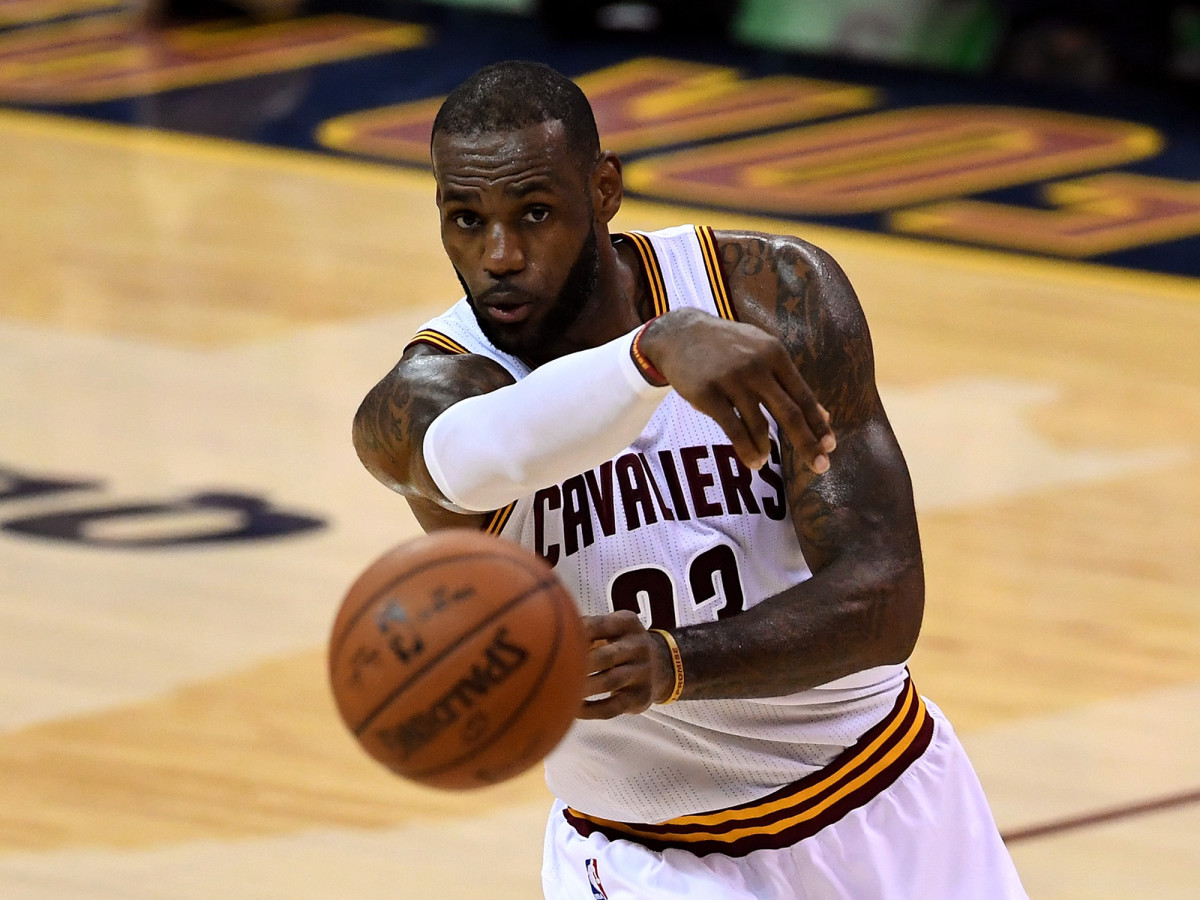Does Cleveland Need Playmakers? The Truth Is In LeBron James's Turnovers

The Cleveland Cavaliers, by their own superstar’s doing, have undergone more roster scrutiny this month than any defending champion in recent memory. It all started with a single combustible comment: "I just hope that we're not satisfied as an organization," LeBron James said last week, per ESPN.com. "I just hope we're not satisfied." For punctuation, James railed on his team’s top-heavy build, the toll of the regular season, and the current roster relative to last year’s team. "We need a f***ing playmaker," James said. "I'm not saying you can just go find one, like you can go outside and see trees. I didn't say that."
LeBron James on Charles Barkley: 'He's a hater'
But what James did say spoke to Cleveland’s peculiar circumstances. The definitive Eastern Conference favorite had dropped five of their last seven games at the time of LeBron’s comments and have looked similarly lifeless in their losses to the Kings and Mavericks since. What’s worse: James himself is carrying his heaviest load in years.
An essential, 32-year-old superstar is leading the league in minutes per game at a time when Cleveland, frankly, needn’t take the regular season all that seriously. This is a time to find a rotation and build habits. But the Cavs, “top-heavy as s---,” have put James in a position where he plays big minutes every night and bears the weight of most offensive possessions without any guarantee of a win.

The truth is in the turnovers. All throughout January, James had the statistical profile of a player forcing the issue. Watch him in action and you’ll see the premise confirmed. J.R. Smith is injured. Kevin Love is ailed by lingering back problems. Those two tweaks—insignificant as they might seem for a team that has both the best player in the league and a worthy supporting star in Kyrie Irving—forced James into a role as an end-to-end playmaker, if only for the lack of alternatives.
Even the best teams in the league can ride a delicate balance. In Cleveland’s case, that balance rests on secondary offense. James and Irving can’t pass exclusively to each other. They move the ball to Richard Jefferson, to Iman Shumpert, to Channing Frye, to Kyle Korver, to DeAndre Liggins, and to James Jones, all while fully aware that a well-balanced close-out by the defense could kill that possession where it stands.
There are entirely too many possessions in which James and Irving are the only Cavaliers to take a dribble. One of the two will drive and kick, only for a slow-footed shooter to pump fake with no recourse. The possession resets. James or Irving repeat, only this time holding the ball for a bit longer in an effort to occupy the defense:
Consider this a reminder that floor spacing can be challenged. Smart teams understand how to force limited role players into uncomfortable positions, particularly the conservative veteran types that fill out Cleveland’s roster. Frye, Korver, and Jones are not the sort to force the issue—nor do they have much reason to. Yet the fact that their playmaking range is so categorically limited changes the way that teams defend the Cavs—nudging James and Irving to the point of forcing shots and driving into crowds.
The deficit is stark. Irving and James are so rarely left open that their outlet options become restricted to specialists alone. Progressive fatigue makes it all the more difficult for James to consistently thread perfect passes through crowds. At some point, the enterprise becomes self-defeating; when the most unselfish superstar in the league loses trust in the fact that his passes will lead to productive ends, the complexion of his game changes.
This is when you see James at his most ornery. His defense—which is pretty relaxed during the regular season as it is—gets even lazier. The grousing begins. Live-ball turnovers undercut what is already a fickle team defense to begin with. Possessions drain away as James pounds the ball on the perimeter, attempting to draw out of isolations and high pick-and-rolls what couldn’t be from a more fluid offense. This isn’t what LeBron signed up for, if only because a few injuries in the dregs of the regular season made it so.
Banana Boat Blues: The 2017 Misery Index
Assigning blame isn’t so important as understanding the risk involved. What happens if Smith returns, but struggles to convert shots after undergoing surgery on his shooting hand? What cost might that injury have for his handle and ability to attack closing defenders off the dribble? Love’s MRI came back clean, but back spasms rarely go away quietly—and they’re exactly the sort of lasting hindrance that would make Love a less dynamic player. Cleveland isn’t a losing team with a bottom-10 offense, as was the case in January.
Their makeup, however, leaves the Cavs susceptible to certain structural compromises. This isn’t a team where just any player could pick up the slack in another’s absence. The responsibility falls so clearly on those creators already doing the most, their usage strained and twisted as a matter of necessity.
